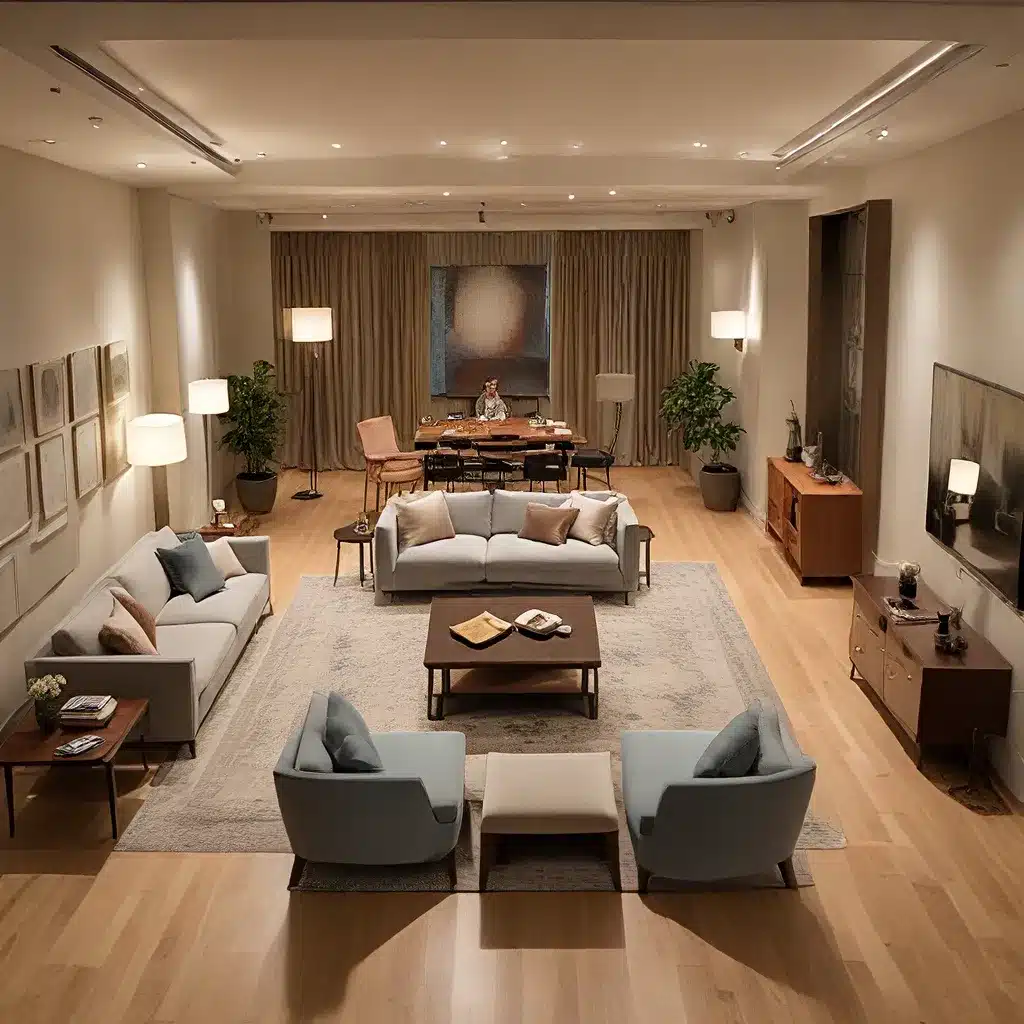
Mastering the Art of Spatial Balance
In the realm of interior design, crafting harmonious and visually captivating spaces is akin to conducting a symphony. Just as a conductor masterfully weaves together the various instruments to create a cohesive and enchanting musical experience, interior designers must thoughtfully arrange the elements within a room to achieve a sense of balance and unity.
At the heart of this endeavor lies the concept of spatial balance, the delicate equilibrium that defines the mood and atmosphere of a space. There are two primary types of balance: symmetrical and asymmetrical.
Symmetrical balance involves mirroring elements on one side of the room with those on the other, creating a sense of stability and order. Imagine a perfectly balanced scale, with each side weighing the same. This approach lends a classic and refined aesthetic, suitable for formal living spaces or elegantly traditional interiors.
In contrast, asymmetrical balance is a more dynamic and visually intriguing approach. It relies on the perception of balance rather than strict symmetry, allowing for creativity and surprise. This might involve placing a large, visually heavy object on one side of the room and several smaller, lighter elements on the other, like a beautifully choreographed ballet that keeps the eye moving.
Harmonizing Elements for Cohesive Design
Achieving the right balance in your space is essential for creating a harmonious and visually pleasing environment. But balance is just one piece of the puzzle; harmony and unity are equally important principles that work hand in hand to elevate your interior design.
Harmony means that all the elements of a room, from the color scheme and furniture style to the patterns and textures, work together seamlessly. To create harmony, choose a theme or style that resonates with you and weave it consistently throughout the space. This consistency will establish a sense of unity, making the room feel like a well-orchestrated symphony, where each note is in perfect harmony with the others.
Infusing Rhythm and Repetition
Just as rhythm and repetition are the heartbeat of music, they also play a vital role in interior design. Rhythm and repetition infuse your space with energy and movement, guiding the eye on a delightful journey.
To establish rhythm, look for ways to repeat certain colors, patterns, or shapes throughout the room. This repetition creates a sense of continuity, tying the various elements together and enhancing the overall cohesiveness of the design. Whether it’s through a repeated color in throw pillows, a consistent pattern in wallpaper, or a repeated shape in artwork, these rhythmic elements act as the threads that weave the room’s narrative together.
Embracing Contrast for Visual Interest
While harmony and unity are essential, a touch of contrast can be the seasoning that adds zest to your interior design. Contrast creates visual interest by juxtaposing different elements, such as contrasting colors, textures, or styles.
For example, a room with predominantly neutral colors can benefit from a pop of bold color, or a modern space can incorporate vintage pieces for a striking contrast. This contrast adds depth, drama, and a sense of excitement to the space, making it more visually intriguing and captivating.
Emphasizing the Focal Point
Every well-designed room should have a clear focal point, an element that draws the eye and becomes the center of attention. This focal point serves as the spotlight, providing a sense of purpose and direction to the space.
To achieve emphasis, consider using bold colors, statement furniture pieces, or eye-catching artwork. By creating a clear focal point, you give the room a sense of hierarchy, guiding the viewer’s gaze and creating a harmonious flow throughout the space.
Mastering Scale and Proportion
Another crucial aspect of spatial harmony is scale and proportion. These principles ensure that the size of furniture and decor items is appropriate for the room, creating a sense of balance and cohesion.
Overly large furniture in a small room can make the space feel cramped, while tiny pieces in a spacious area may seem lost and out of place. By paying close attention to the scale and proportion of your furnishings, you can create a sense of spatial harmony, a room that feels just right, like a well-tailored suit.
Prioritizing Functionality
While the aesthetic appeal of a space is undoubtedly important, functionality should never be overlooked. Interior design should enhance the way you use a room, considering the layout, flow, and organization to ensure it meets your practical needs.
Thoughtful storage solutions, ergonomic furniture, and efficient layouts can greatly improve a room’s functionality, transforming it into a harmonious sanctuary that not only looks beautiful but also works seamlessly with your daily life.
Orchestrating Spatial Harmony
In the world of interior design, creating a spatial symphony that seamlessly unites elegance and functionality is an art form. By understanding and applying the principles of balance, harmony, rhythm, contrast, emphasis, scale, and functionality, you can transform your living space into a visually pleasing and functional oasis that truly reflects your unique style and personal preferences.
Whether you’re embarking on a full-scale renovation or simply seeking to refresh a room, let these principles be your compass. Watch as your space undergoes a remarkable transformation, becoming a testament to your design expertise and a reflection of your best self.
At Urban Grace Interiors, we understand the importance of spatial harmony in creating truly exceptional living environments. Our team of experienced designers is dedicated to guiding you through the process, from conceptualization to execution, and transforming your vision into a reality.
Embrace the art of spatial symphony and let us be your partner in orchestrating the perfect furniture layout for a harmonious and captivating interior. Contact us today to embark on a journey of design that will elevate your living experience to new heights of beauty, functionality, and personal satisfaction.

